Feature Stair Series
Curved Stairs: Features, Types, & Advantages
At the peak of contemporary design, curved stairs are a go-to design tool to introduce elegance and sophistication in a space.
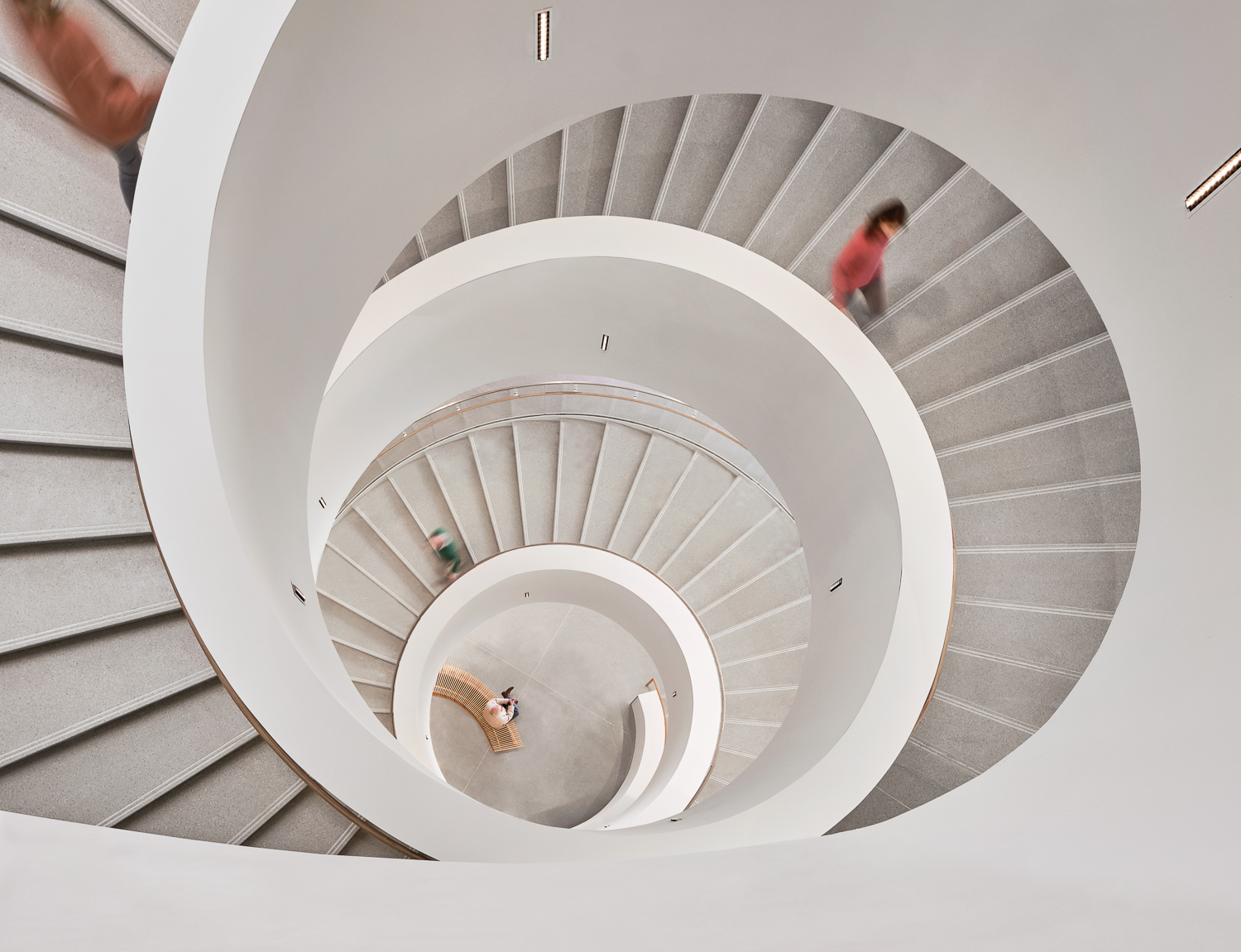
Curved stairs are a type of staircase design that features a curved or circular shape. Also known as spiral stairs or helical stairs, curved stairs curve around a central axis or follow a circular path.
CURVED STAIRS: A BREIF HISTORY
If you think the spiral staircase is a modern-day phenomenon, you’d be wrong. A popular and highly used design feature in modern architecture, curved stairs can also be found in some of the world’s oldest architectural buildings, dating back to 5th century BC in Greece. Throughout history, curved stairs have been a common architectural feature in castles, churches, and other significant structures. They were also widely utilized as decorative accents in palaces and villas during the Renaissance. Today, the recent curved stairs trend in commercial spaces represents the peak of contemporary design, offering a fresh and nature-like appearance that opens spaces while evoking drama.
CURVED STAIRS IN ARCHITECTURE
DIFFERENT TYPES OF CURVED STAIRS
Spiral Stairs:
Spiral stairs feature a continuous helical shape, typically around a central column or post. The treads are connected to a central column, and the staircase ascends in a tight spiral. Spiral stairs are often compact and space-efficient, making them suitable for small spaces or as secondary staircases in buildings.
Helical Stairs:
Helical stairs are similar to spiral stairs but have a broader curve. They follow a smooth, flowing curve without a central column, and the treads are supported by a curved stringer or a curved wall. Helical stairs provide a more open and graceful ascent, often found in larger spaces or as prominent staircases in buildings.
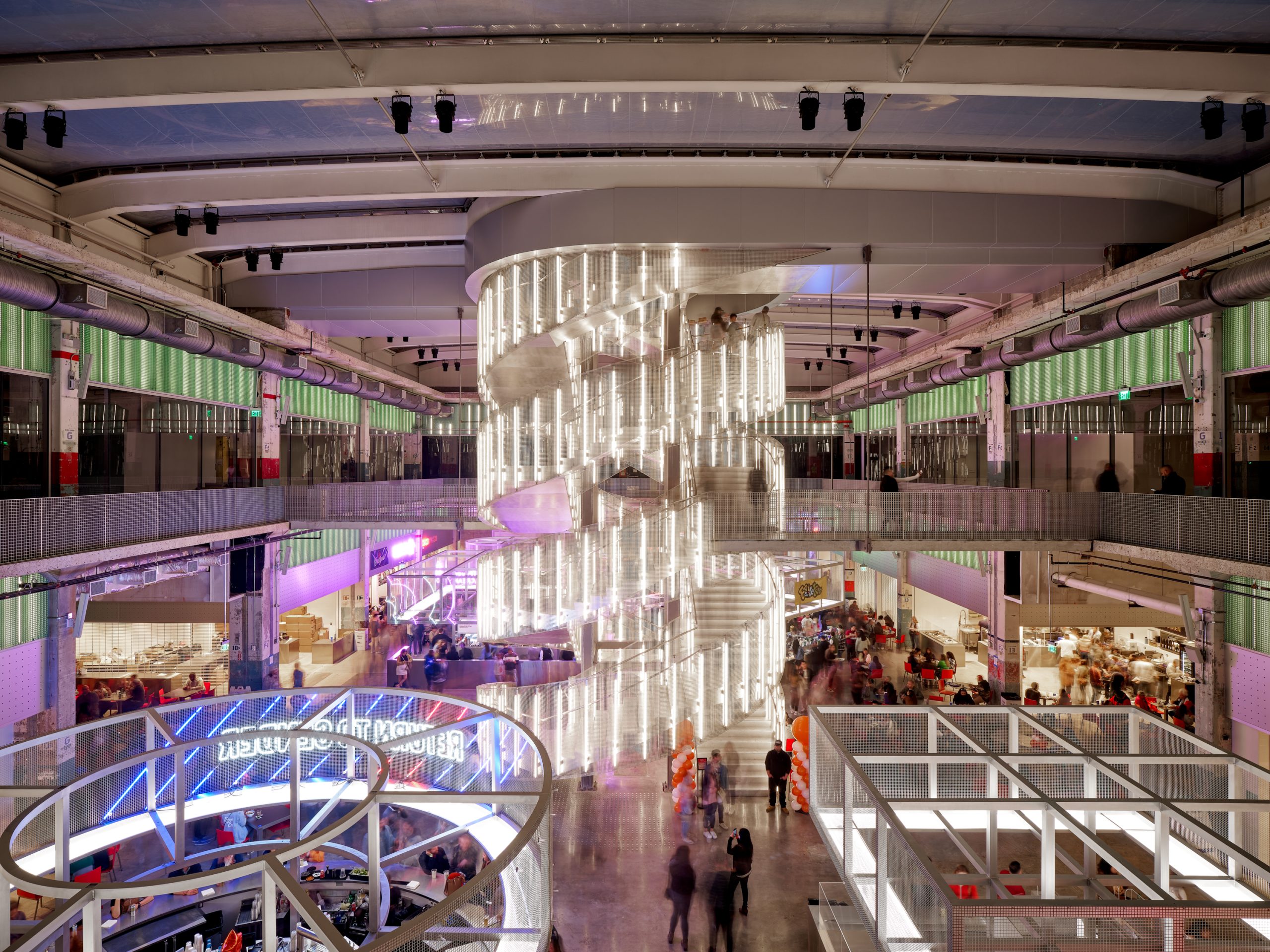
A rare double-helix design at Synergi’s Post HTX Project. Read the Case Study!
Elliptical Stairs:
Elliptical stairs have a curved shape that follows an elliptical or oval path. They are characterized by their smooth, continuous curve without any sharp corners or angles. Elliptical stairs offer a graceful and flowing ascent and are often used in more formal or luxurious settings.
Circular Stairs:
Circular stairs form a complete circle, with each step radiating from a central point. They are symmetrical and have a uniform curve throughout. Circular stairs are commonly found in structures where a full 360-degree turn is required, such as towers, observatories, or lighthouses.
These are just a few examples of the types of curved stairs in architecture. Each type offers a unique design and visual impact, allowing architects and designers to create stunning and functional staircases that complement the overall architectural style and intent of a building.
ADVANTAGES OF CURVED STAIRS IN ARCHITECTURE
Curved stairs are highly valued for their visual appeal and architectural elegance. They add a sense of grandeur, drama, and sophistication to a space. The smooth, flowing lines of a curved staircase can create a striking focal point and enhance the overall aesthetic value of a building.
A curved staircase adds a level of luxury to a space that is not always attainable with linear stair designs.
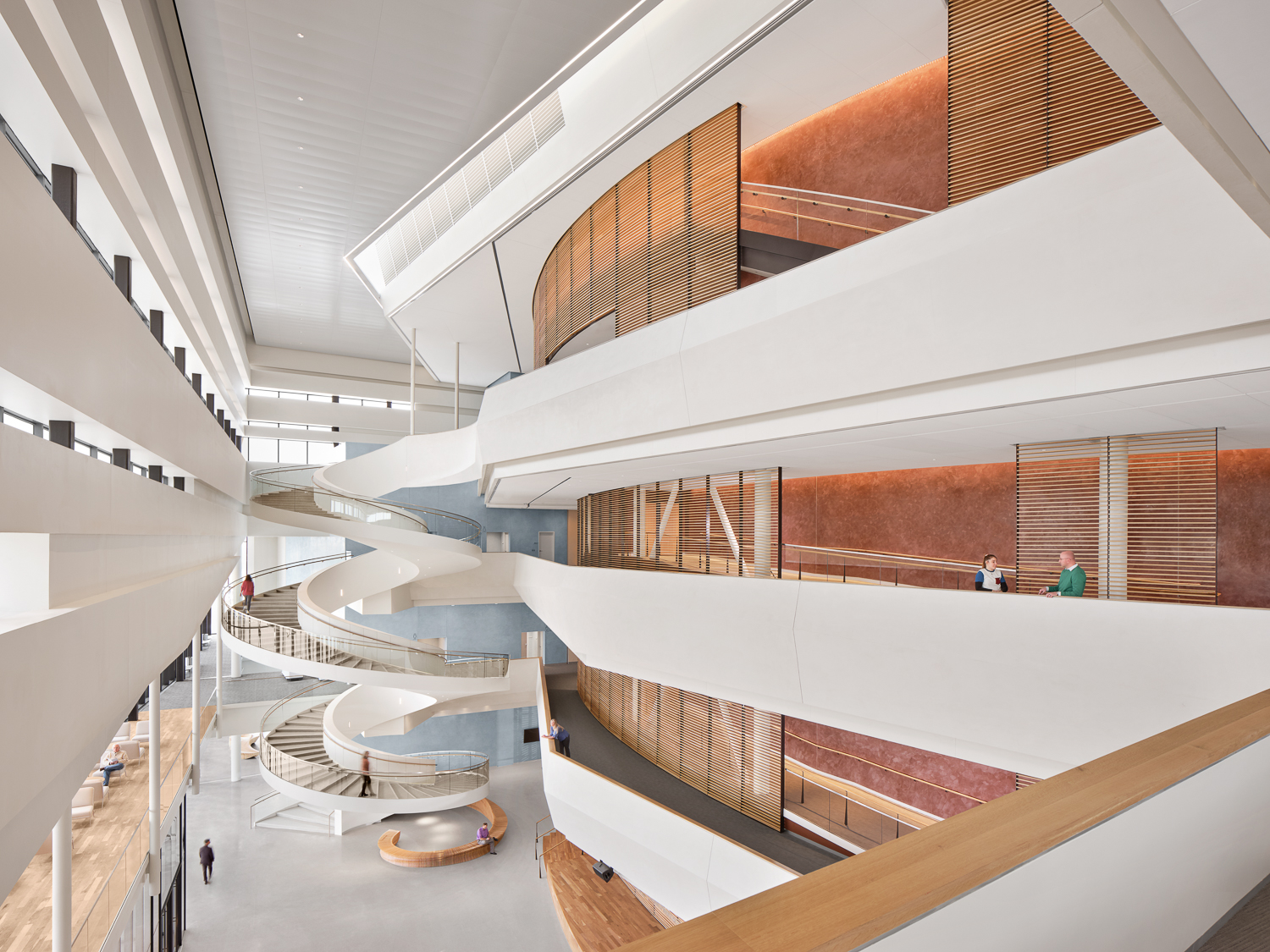
Custom spiral feature stair at Buddy Holly Hall.
Space efficiency is a major advantage when choosing to incorporate curved stairs in a project’s design. Curved stairs are often used when space is limited or when designers want to optimize the available floor area. They occupy less floor space compared to straight stairs of the same height, making them suitable for compact or narrow settings. Additionally, their design allows for a more efficient vertical circulation in buildings, especially in cases where straight stairs would require longer runs.
DESIGN AND CONSTRUCTION OF CURVED STAIRS
Curved stairs offer a high level of customization and can be tailored to suit specific architectural designs and personal preferences. They can be designed with different radii, degrees of curvature, and step configurations, allowing for a wide range of creative possibilities. From grand sweeping spirals to more subtle helical designs, curved stairs can be customized to fit seamlessly into the overall architectural vision of a space. Here are some key considerations when designing and constructing curved stairs:
Structural Considerations:
Constructing curved stairs requires careful planning and engineering. The curved shape imposes unique structural challenges, as the treads and risers must be precisely shaped and positioned to maintain stability and ensure safe usage. Supporting structures such as a central column or a curved wall are often used to provide stability and bear the weight of the stairs.
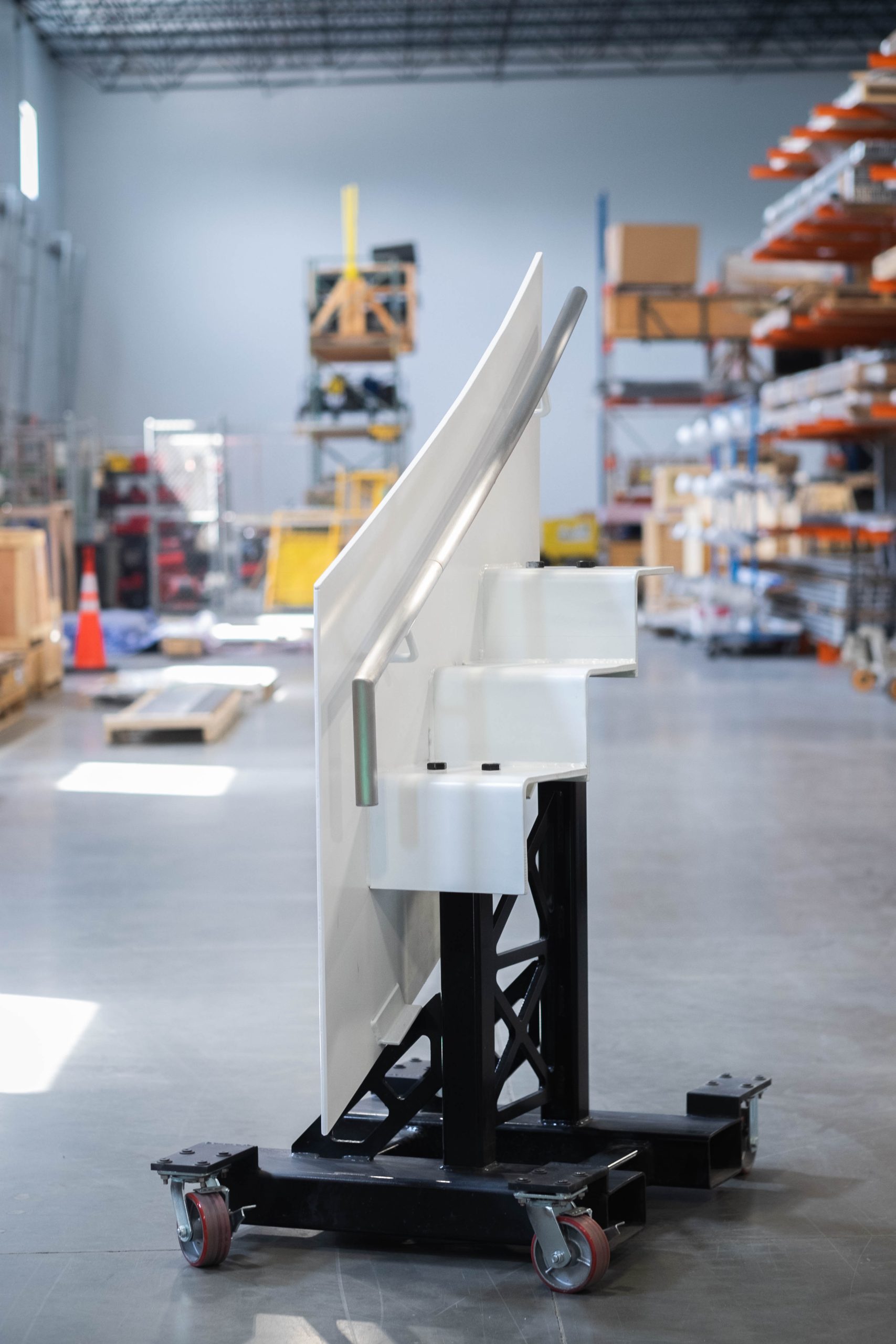
Synergi’s mockup of prefabricated curved stair for Rutgers University.
Materials and Construction:
Curved stairs can be constructed using various materials, including wood, metal, glass, stone, or a combination of these materials. The choice of materials depends on factors such as the desired aesthetic, structural requirements, budget, and overall design concept of the building. Each material has its own properties, textures, and finishes that can further enhance the visual impact of the staircase.
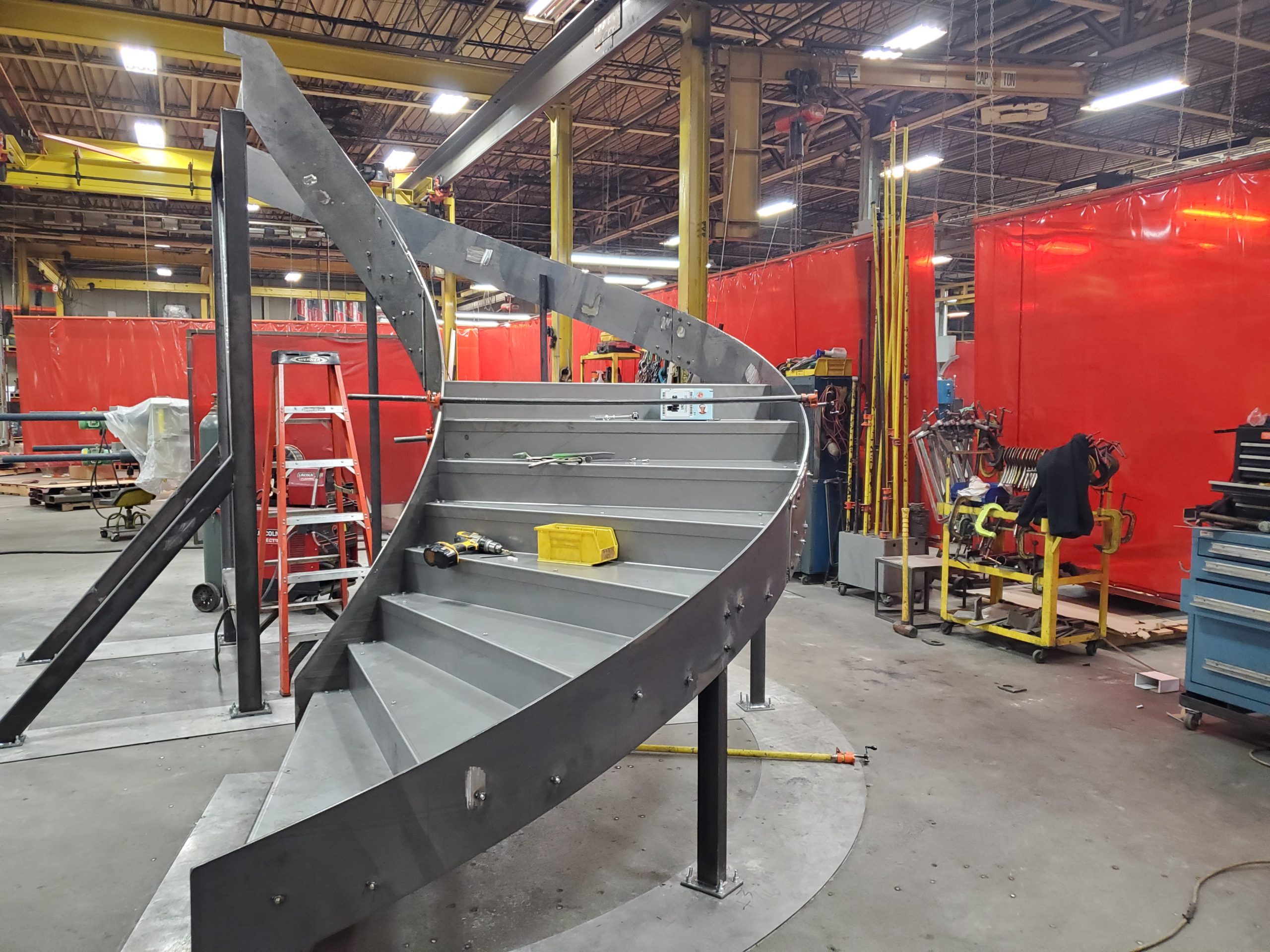
Fabrication of Synergi’s curved stair for Microsoft Atlantic Yards HQ.
Functionality and Accessibility:
While curved stairs are primarily valued for their aesthetic qualities, it’s important to consider their functionality and accessibility. Due to their curved design, they can be more challenging to ascend and descend compared to straight stairs. However, incorporating appropriate handrails, tread dimensions, and lighting can greatly improve safety and ease of use.
Synergi’s lighted curved feature stair at Google’s Atlanta Office.
While combining functionality and aesthetics, curved stairs provide an elegant and space-efficient solution for vertical circulation in buildings. Whether they serve as a practical means of movement or a statement of architectural artistry, curved stairs add a unique charm and character to the spaces they inhabit.
MAKING AN IMPACT: CURVED STAIRS IN HIGHER EDUCATION SPACES
Most architects today recognize the aesthetics and visual impact that curved stairs offer. As the educational sector is embracing innovative design concepts to create dynamic and collaborative environments for students, feature stairs, particularly curved ones, are becoming increasingly popular in the design of higher education institutions. These visually striking and architecturally significant stairs are incorporated into higher education building designs as prominent elements, often serving as both functional and aesthetic focal points.
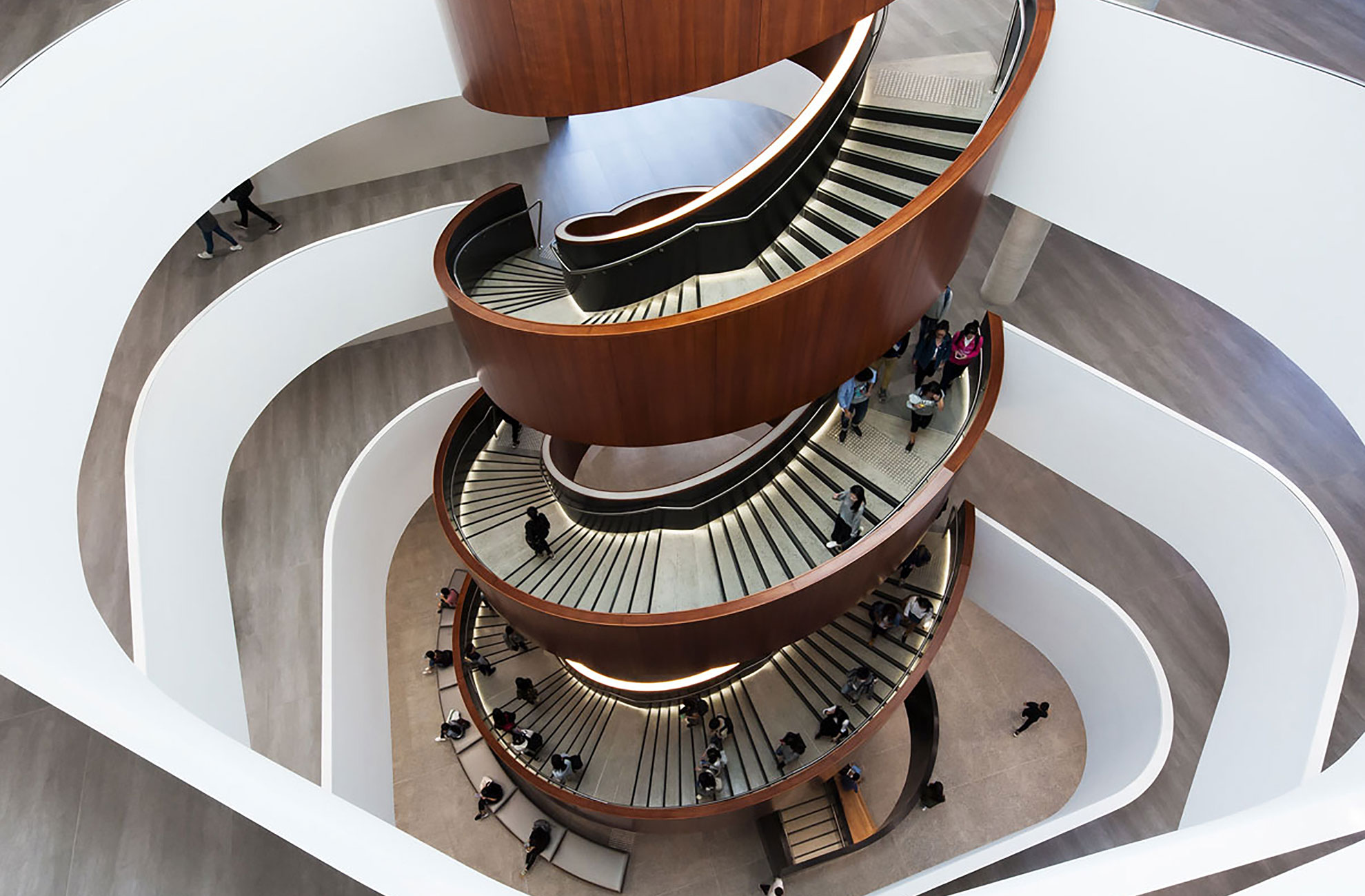
Striking curved stair at the University of Sydney.
Below is a list of 6 ways that curved stairs impact higher education spaces:
Space Optimization + Architectural Flexibility:
In higher education environments where space is limited, curved stairs can be a valuable design solution. They occupy less floor space compared to straight stairs, allowing for efficient use of the available area. By utilizing the vertical dimension effectively, curved stairs can maximize the floor space for other functions such as workstations, meeting rooms, or collaborative areas. This also allows for greater flexibility in the design, allowing architects to create unique and customized office spaces with a cohesive flow.
Improved Flow and Circulation:
Curved stairs can facilitate a smooth flow of movement within higher education spaces. They provide a natural and intuitive path, encouraging students and faculty to navigate between different levels or areas of a building with ease. The curvature of the stairs can guide people around corners or obstacles, eliminating the need for long, monotonous corridors and promoting a more dynamic and interactive layout.
Enhanced Collaboration and Interaction:
Curved stairs can serve as a gathering point or social hub within educational spaces. The design encourages employees to meet, chat, and interact as they ascend or descend the stairs. This can foster a sense of community, collaboration, and spontaneous communication, leading to increased engagement and creativity among students.
Positive Work Environment:
The presence of curved stairs in higher education spaces can contribute to a positive work environment. They add an element of interest, novelty, and beauty to the space, which can enhance student satisfaction, productivity, and overall well-being. The aesthetic appeal of curved stairs can create a visually stimulating and inspiring atmosphere, making the educational environment more enjoyable and motivating for students.
Symbolism and Branding:
Curved stairs can be used as a symbol or representation of an institution’s values, identity, or aspirations. Their unique and eye-catching design can become an iconic feature associated with the campus. In this way, curved stairs can contribute to reinforcing a university’s image, establishing a strong visual identity, and leaving a lasting impression on students and faculty.
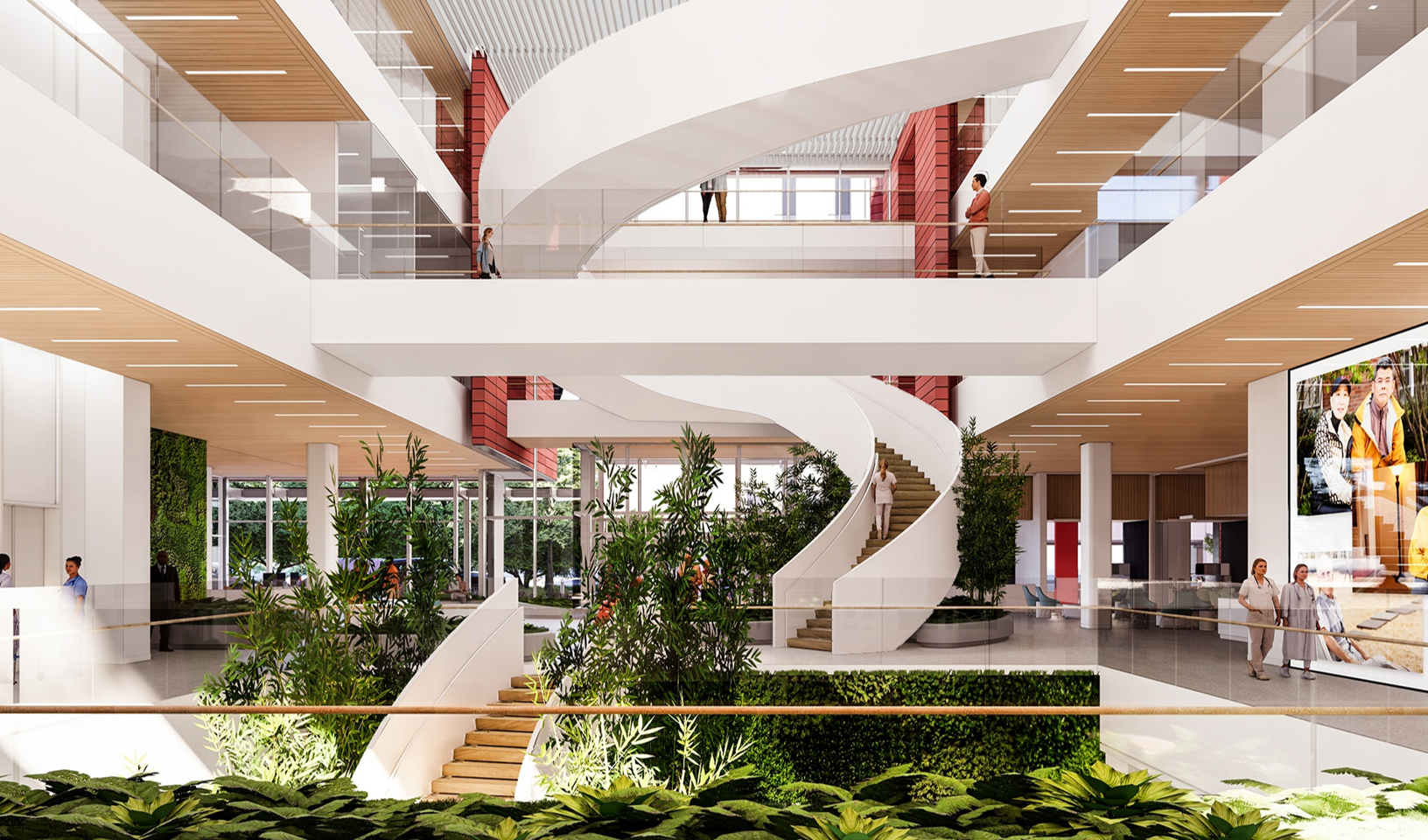
A great example of symbolism and branding, Synergi’s project, the Rutgers Cancer Institute of New Jersey, features a 4-story monumental curved feature stair – designed to resemble the shape of a cancer ribbon.
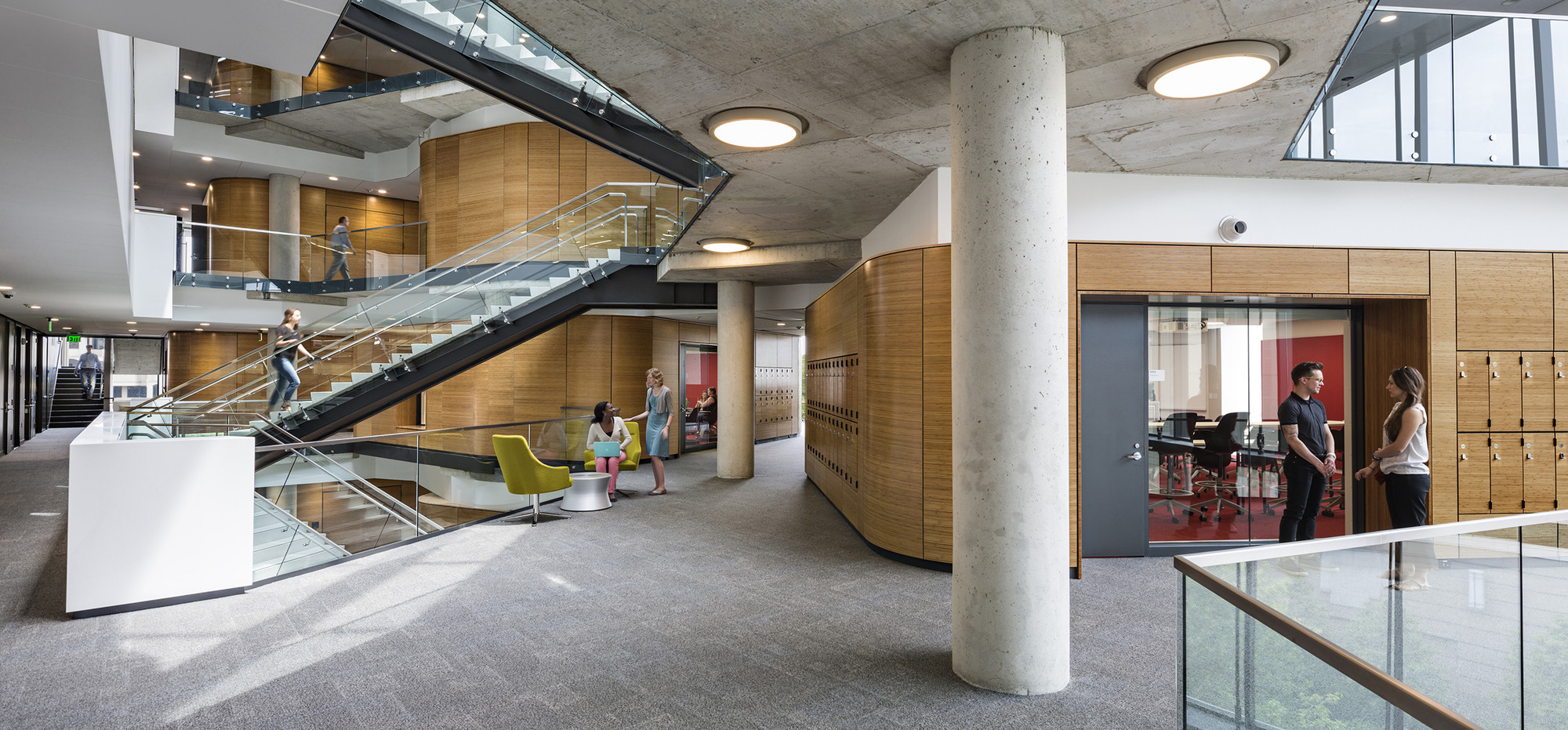
Higher-Education Institutions Benefit from Feature Stairs
